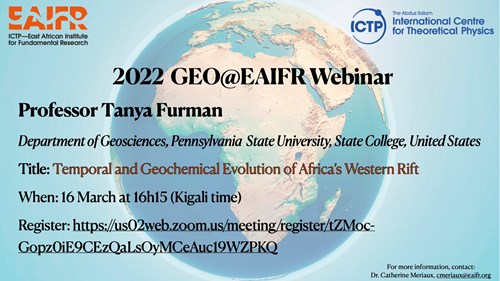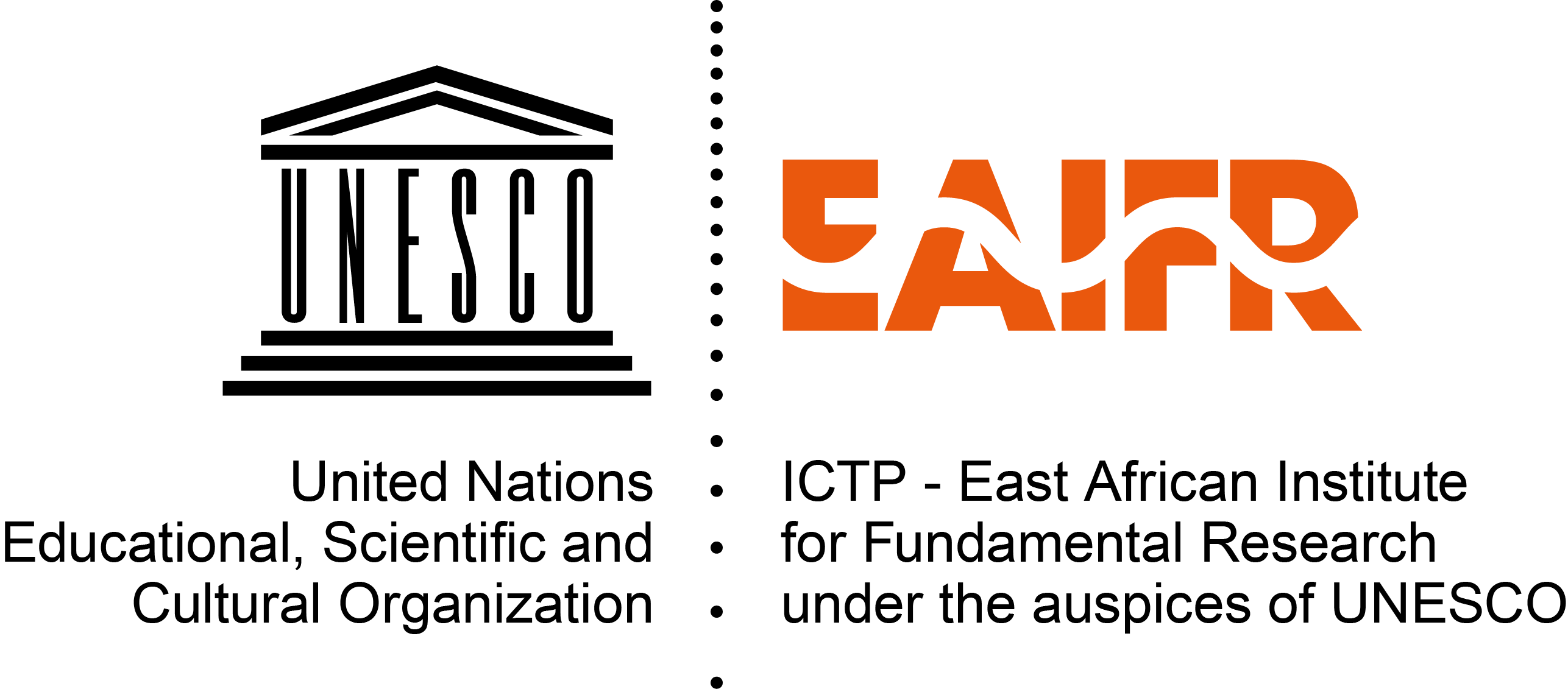ICTP-East African Institute for Fundamental Research
KIST2 Building CST
Nyarugenge Campus
University of Rwanda
Kigali, Rwanda
2022 GEO@EAIFR Webinar Series
Professor Tanya Furman from Pennsylvania State University, United States, will give a GEO@EAIFR webinar discussing the Temporal and Geochemical Evolution of Africa’s Western Rift.

The East African Institute for Fundamental Research (EAIFR) and the International Centre for Theoretical Physics (ICTP) wish to inform those who may be interested of a GEO@EAIFR webinar. This seminar will take place next week and will be broadcast live on ZOOM. It will also be recorded and later posted on the EAIFR YouTube channel. Below all the details:
Speaker: Professor Tanya Furman from the department of Geosciences, Pennsylvania State University, United States
Title: Temporal and Geochemical Evolution of Africa’s Western Rift
When: 16 March at 16h15 (Kigali time)
Register in advance for this meeting by clicking here
Biography:
Tanya Furman is a Professor of Geosciences at the Pennsylvania State University. She served the University as Associate Vice President and Associate Dean for Undergraduate Education from 2007-2017, focusing on the assessment of student learning and improving student success in gateway STEM courses. Her scientific research uses the geochemistry of lavas and their crystal cargo to understand the geodynamic evolution of the Earth’s mantle. Furman is also active in Geoscience Education Research, most recently exploring student learning around plate tectonics. She earned her PhD from the Massachusetts Institute of Technology in 1989 and has been on the faculty at the University of Virginia and Penn State since then. Her graduate students have moved on in careers in academe, industry and the private sector including the World Bank and Blue Origins.
Abstract:
The evolution of the East African Rift System (EARS) involves fundamental questions of plate tectonics: how do continents separate and reassemble over geologic time, how do we know this history, and why does it matter? The Western Rift, which follows the western boundary of the Tanzania craton, is distinguished from other sectors of the EARS by greater seismicity, less extension and less volumetric magmatism. These characteristics, as well as the distinctive alkaline geochemistry of the mafic volcanic products, provide important insights into continental plate tectonic processes. Four volcanic provinces define magmatism in the Western Rift: Toro Ankole, Virunga, Kivu and Rungwe. Early models called for progressive rifting southward from Afar over the past 30 Ma, but recognition of ~45 Ma volcanism at Turkana (Kenya) and increased high-precision dating of lavas throughout the EARS has revealed complexity in the rifting process and now suggests near-coeval initiation of both the Eastern and Western Rifts. The role of a mantle plume in Western Rift magmatism remains enigmatic, as geochemistry of young mafic lavas records melting of fluid- and melt-metasomatized veins distributed heterogeneously throughout the lithosphere rather than direct contributions from the deep mantle. Rift development appears to be associated with small-scale lithospheric removal through foundering and/or delamination, which carries important implications for regional geothermal and hydrothermal resource potential.



